Behind every successful brand is the willingness to understand its consumers’ thoughts, perceptions, and expectations surrounding its products or services. Only by diligently analyzing and incorporating customer feedback into its innovations does a brand ensure its products or services are functional and practical. This is precisely where voice of the customer (VOC) programs come into play.
VOC programs are a strategic imperative for any brand looking to thrive in today’s hypercompetitive business landscape, where customer preferences shift in the nick of time. They guide brands toward better understanding their consumers’ preferences, pain points, and aspirations. It ultimately helps them adjust or improve future offerings based on customer feedback and elevate the overall customer experience.
The Thin Fine Line Between Market Research and VOC Programs
People often mistake market research and VOC programs for the same. In reality, they are not. Although both market research and voice of customer programs share a few similarities in their methodologies, they differ in their intent, orientation, and implementation.
At its core, market research aims to decipher macro trends, industry dynamics, and market segmentation to provide organizations with a panoramic view of the competitive landscape. From quantitative surveys to qualitative focus groups, it encompasses various methodologies to inform strategic initiatives and market positioning tactics.
VOC programs, on the other hand, focus on amplifying the individual voice of the customer, seeking to understand and address their unique preferences, pain points, and aspirations. By soliciting direct feedback through surveys, feedback forms, and social media interactions, VOC programs bring a granular perspective that helps brands modify their products and services to ensure customer satisfaction.
One must also remember that market research operates within a spectrum of stakeholders, including consumers, competitors, and industry influencers. It strives to uncover overarching trends that shape market dynamics, empowering organizations to anticipate shifts and capitalize on emerging opportunities.
In contrast, VOC programs adopt a customer-centric orientation, focusing on individual customers and their interactions with the brand. These programs cultivate empathy and understanding by prioritizing the customer’s voice, nurturing lasting relationships built on trust and mutual respect.
Most importantly, the actions taken on insights derived from market research and VOC programs vary in scope and application. Market research findings are foundational pillars upon which strategic decisions are formulated, guiding long-term investments, product development strategies, and market expansion initiatives.
Conversely, VOC programs lend themselves to operational optimization and tactical interventions, enabling organizations to fine-tune their processes, enhance product or service delivery, and resolve customer issues in real time.
Turn Feedback into Action: Build a VOC Program That Drives Results
Outlining Objectives and Metrics: Start by clearly defining the objectives of your VOC program. What specific insights are you seeking to gain? Whether it’s improving product features, enhancing customer service, or optimizing the overall customer experience, articulate your goals clearly. At the same time, establish key performance indicators (KPIs) like Net Promoter Score (NPS), Customer Satisfaction (CSAT), and Customer Effort Score (CES) to gauge the impact of your initiatives and track progress over time.
A Multi-Channel Approach to Collecting Feedback: To fully understand the customer experience, deploying a multi-channel approach is a must. Your feedback collection strategy should involve a combination of surveys, feedback forms, social media listening, online reviews, and customer service interactions to gather insights from diverse touchpoints. Each channel offers unique perspectives and lets you capture real-time feedback, enabling you to address issues promptly and proactively.
Extensive Data Analysis: Collecting feedback is only half the battle; the real value lies in analyzing and interpreting the data to derive actionable insights. Make the most of advanced analytics techniques like sentiment analysis, text mining, and predictive modeling, to uncover trends, patterns, and correlations within your customer feedback data. Identifying common themes and root causes of customer satisfaction or dissatisfaction will help you prioritize improvement initiatives and allocate resources strategically.
Continuous Innovation: Understanding the voice of consumer is not a one-time initiative but an ongoing continuous improvement and innovation process. Regularly review and refine your feedback collection methods, survey questions, and analysis techniques to adapt to changing customer needs and market dynamics. Experiment with all novel technologies like artificial intelligence, machine learning, and predictive analytics, to stay ahead of the curve and anticipate future trends. It is all about inculcating a culture of continuous innovation and learning, to evolve your VOC program and deliver maximum value and impact over time.
Advancing VOC Programs with Cutting-Edge Platforms
With ever-evolving trends all vying for customers’ attention at once, there has been a massive shift in consumer behavior and consumer decisions, which poses a challenge for brands trying to figure out their exact preferences. This communication gap calls for advanced voice-of-the-customer platforms, which transform how brands interact with and comprehend their audience.
Surface-level feedback is not enough anymore, which is why our Voice of Customer platform empowers brands to delve deeper into their customers’ minds through various mediums, including direct interviews, dyads, focus group discussions, and online chat groups. Using Whatsapp and similar chat-based applications, our platform provides a way to seamlessly collect qualitative data online, sparking conversations that reveal invaluable insights.
In an era filled with marketing campaigns that often turn out to be smokescreens, our Voice of Customer platform goes beyond traditional methods to ensure the authenticity of consumer responses. Enhanced with facial coding and tonality analysis, the platform enables brands to delve into the nuances of consumer sentiments, uncovering underlying emotions and providing a deeper understanding of their preferences and behaviors.
This level of authenticity validates consumer responses and allows brands to make more informed decisions based on genuine insights. The consumer insight platform can also be implemented across various channels, enhancing KPI measurement by providing in-depth, contextual data. It helps improve overall marketing effectiveness, boost customer satisfaction, and create brand resonance.
Amid new social trends and technologies redefining the way people communicate with brands, it is essential to establish a well-implemented VOC program that can elevate your brand’s understanding of the customer and help you stay ahead of the curve. Through a synergistic effect of strategic thinking, customer-centricity, and state-of-the-art consumer insight platforms, you can forge meaningful connections with your audience and guarantee long-term success for your brand.







